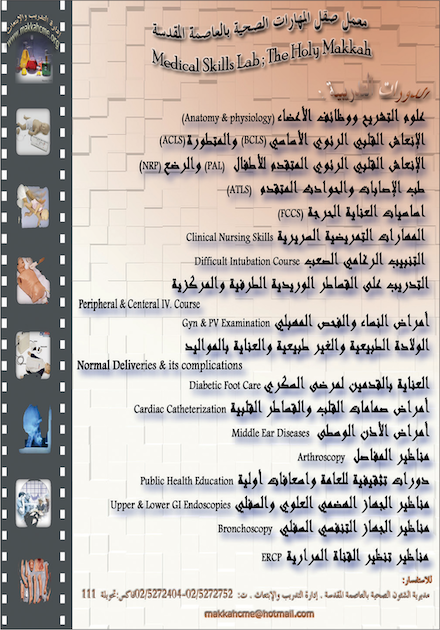Advertisement
Abstract
Simulation advanced medical education and medical personnel evaluation across the world.[1] For improving the healthcare skills of medical staff and clinical performance of health-care practitioners, the Ministry of Health issued a budget of three million Saudi Riyals to establish the first clinical skills and simulation center in the Kingdom of Saudi Arabia, in Makkah, at the beginning of 2003. The objectives were to establish a state-of-the-art simulation laboratory to improve the clinical performance of health-care practitioners, facilitate consistent formal clinical training, overcome the difficulties encountered by practitioners in actual practice in either the pre- or post-graduate period, and provide jobs through specialized training and education.
The first phase of the project consisted of searching for a location, establishing a structured 3-year plan, and convincing stakeholders of the concept of clinical training. The second phase included preparation of the venue, building up of human resources, interior designing of showrooms, and documentation of each single action. The third and final phase consisted of marketing and advertising, official accreditation of short- and long-term courses, and postgraduate medical professional training. Each phase required an entire year of planning to complete from 2002 to 2004 [Figure 1].
Types of courses conducted at the skill laboratory since 2004: Anatomy and Physiology, Basic Cardiac Life Support (BCLS) and Advanced Cardiac Life Support, Pediatric Advanced Life Support and Neonatal Resuscitation Program, Advanced Trauma Life Support, Fundamental Critical Care Support, Clinical Nursing Skills, Difficult Intubation Course, Peripheral and Central IV Course, Gyn and PV Examination, Normal Deliveries and Its Complications, Diabetic Foot Care, Cardiac Catheterization, Middle Ear Diseases, Arthroscopy, Public Health Education, Upper and Lower GI Endoscopies, Bronchoscopy, and Endoscopic Retrograde Cholangiopancreatography [Figure 2].
As of 2022, the center is under the administration of Makkah Healthcare Cluster and named The Simulation Center of Makkah Healthcare Cluster, and it is affiliated with Hera General Hospital, Al Noor Specialist Hospital, Maternity and Children Hospital, and King Abdullah Medical City Simulation Centers. Each of the simulation centers has a vast majority of stations, with specialized stations related to the availability of medical specialty, for instance, Gyn/Obstetric-related stations at Hera General Hospital and Maternal and Children Hospital, Cardiac Catheterization station at Al Noor Specialist Hospital and King Abdullah Medical City, and Oncology-related stations at King Abdullah Medical City. The BCLS training centers at the institutions of Makkah Healthcare Cluster are supervised by The Simulation Center of Makkah Healthcare Cluster.

Figure 1. First purchase of the equipment in year 2002.

Figure 2. Types of courses conducted at the skill laboratory since 2004.
The Clinical Skills and Simulation Center at the Ministry of Health of Saudi Arabia has adopted various programs and specialized courses for its healthcare practitioners.[2] The vision of The Simulation Center of Makkah Healthcare Cluster is to render every simulation station accessible to its employees, with an interactive website to help provide the best experience in browsing through the courses that will be of immense support to the staff ’s field of expertise and to upgrade their knowledge and skills.
Authors contributions
Study conception, AK and MIF; manuscript review and editing, AK and MIF; manuscript writing, AAA.
References
- Issenberg SB, McGaghie WC, Petrusa ER, Gordon DL, Scalese RJ. Features and uses of high-fidelity medical simulations that lead to effective learning: A BEME systematic review. Med Teach. 2005;27:10-28.
- MOH News: The MOH’s Clinical Skills and Simulation Center Accredited as a Training Center for DMEP Courses. 2016. https://www.moh.gov.sa/en/ministry/mediacenter/news/pages/news-2016-09-28-001.aspx [Last accessed on 2022 Jan 08]
Comments & Peer Review
Must Read
Downloads
Article Details
How to Cite
Publication history
Published: 12-12-2022
Copyrights & License

This work is licensed under a Creative Commons Attribution 4.0 International License.
Search Panel
Pubmed
JMRI Journal
Google Scholar
Pubmed
JMRI Journal
Google Scholar
Pubmed
JMRI Journal
Search for this article in:
Google Scholar
Researchgate
CNKI Scholar

